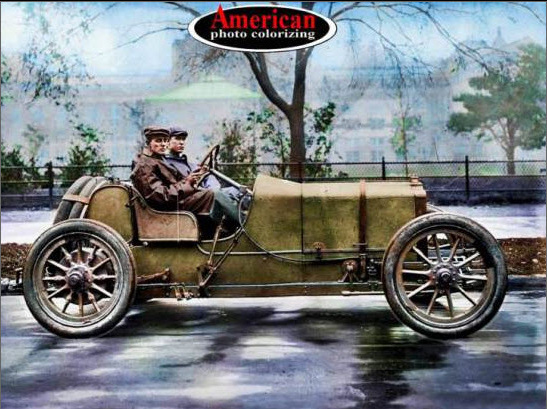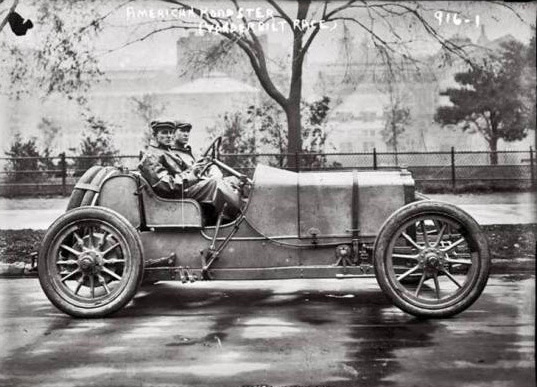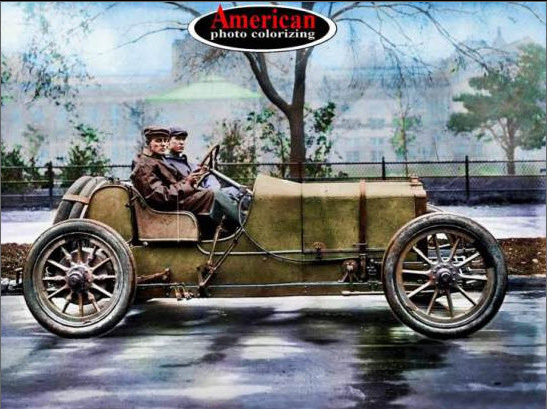A Colorized Photo of the #23 American that Raced in the 1910 Vanderbilt Cup Race

Sam Berliner III has forwarded a link to a colorized photo of a Vanderbilt Cup racer posted on the American Photo Colorizing blog.
American Photo Colorizing converts black and white photos for museums, educators, media and families. This is their description of the photo:
Vanderbilt Cup Race (1910)
The year is 1910. There were six Vanderbilt Cup Races held on Long Island from 1904 to 1910. These represent the first international automobile road races in the United States. The 1910 race was held on October 1st, and the course covered a little over 12 1/2 miles of Long Island roadways. The winner had to complete 22 laps.
Faster cars clocked between 60 and 65 miles per hour, not a bad time for 1910. An estimated 300,000 spectators lined the course – sans barricades – often getting in the way of the competing automobiles. Imagine navigating your car at 65 mph through a crowd the size of Woodstock, and you get a fair idea what the drivers were up against.
Shown here is American driver, William Wallace, who finished in 26th place. Sure, Wallace didn’t win the Vanderbilt Cup for 1910 – but, doesn’t his car look awesome? Maybe if he hadn’t stopped to have his picture taken, Bill might have placed 25th.
Enjoy,
Howard Kroplick





Comments
Many (most?) readers may not be aware that the AmerIcan was known as the “American Underslung” because of its suspension. The axles were fastened ABOVE the spring leaves (see the photo), giving the Americans a much lower center of gravity and profile, resulting in a racier look (even on stodgy coupés and sedans), slightly-lower wind resistance, and better cornering. Sam, III
So? Do we know exactly where this picture was taken?
________________________________________
From Howard Kroplick
Good question! I don’t.
From Rich R.
Interesting color version may have its place as a conversation piece. But there’s no replacement or substitute for the authentic and historic B&W original image.